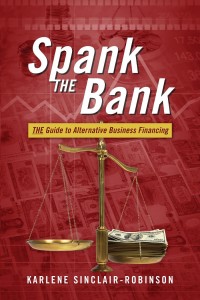merchant financing
Merchant Cash Group NCAA Contest Winners Announced
April 10, 2013 If you weren’t in this year’s NCAA bracket competition hosted by Merchant Cash Group, you missed out on a lot of fun!! But that’s okay, because well there’s always next year 🙂
If you weren’t in this year’s NCAA bracket competition hosted by Merchant Cash Group, you missed out on a lot of fun!! But that’s okay, because well there’s always next year 🙂
From Heather at Merchant Cash Group:
“Merchant Cash Group had the privilege of hosting a NCAA March Madness Bracket Challenge offering a top cash prize of $500.00. We invited people from all over the financial industry to join our friendly competition where even the losers walk away with a cool prize. The Brackets were shaken up severely with the Cinderella story of Florida Gulf College and the early elimination of some of the top schools, uh hum Kansas St, New Mexico and UNLV to name a few. By April 8th we were down to only one person (Billy Crowe) who had Louisville winning it all and with that made a come behind win with a 15 point spread.
Now, while Billy is walking away with the Grand Prize all the other participants will be receiving a basketball bobble head trophy announcing to everyone that they in fact our bracket challenged. I would like to thank everyone who participated in the competition and I look forward to hosting more networking opportunities for our space. Below is the final standings and in the interest of saving ego’s please do not rag the losers to hard after all they are stuck with a bobble head.”
- Billy Crowe – PricewaterhouseCoopers Final Score: 111
- Heather Francis – Merchant Cash Group Final Score: 96
- Badger Morning – Merchant Cash Group Final Score: 80
- Sean Murray – Raharney Capital Final Score: 74
- Kara B – Merchant Cash Group Final Score: 73
- Jason Fullen – NVMS Final Score: 69
- Michael Bernier – SBS Capital Final Score: 59
- J. Mark Anderson – Business Funding USA Final Score: 50
- Scott Williams – Financial Advantage Group Final Score: 48
————————————
My chances at bracket gold were dashed when New Mexico lost in the first round to Harvard. Harvard…
Thank you Heather for the fun and also I want to let everyone know that I will be spending some time at Merchant Cash Group’s booth during the ETA expo (#751) on behalf of MPR and DailyFunder. Merchant Cash Group is a great MCA company and I am honored to participate in their exhibit.
ETA Expo 2013 is Approaching
April 9, 2013 The ETA Expo 2013 in New Orleans is fast approaching. If you haven’t registered yet, you should probably go and do that over at http://www2.electran.org/am13/. This will personally be my first time to New Orleans and I am excited to meet and speak with a lot of you. Merchant Processing Resource and DailyFunder will be running a live blog to cover the happenings both big and small each day. So if you’ve got an iPhone and you haven’t downloaded the app yet, now is a good time to go and do that so that you can follow along.
The ETA Expo 2013 in New Orleans is fast approaching. If you haven’t registered yet, you should probably go and do that over at http://www2.electran.org/am13/. This will personally be my first time to New Orleans and I am excited to meet and speak with a lot of you. Merchant Processing Resource and DailyFunder will be running a live blog to cover the happenings both big and small each day. So if you’ve got an iPhone and you haven’t downloaded the app yet, now is a good time to go and do that so that you can follow along.
David Rubin, a co-founder of DailyFunder will also be on site and we plan on having some fun giveaways.
So don’t forget plan your meet-ups, what to do, and who to see before you arrive. Talk about it on DailyFunder.
MCA Industry Continues Expansion
April 3, 2013 It’s said that one way to measure success or growth of an industry is to count how much capital is being raised. In that case, Kabbage and On Deck Capital have been on fire lately.
It’s said that one way to measure success or growth of an industry is to count how much capital is being raised. In that case, Kabbage and On Deck Capital have been on fire lately.
Early this morning, Kabbage announced they had secured a new $75 million line, after having just raised $30 million 6 months ago. The Forbes article announcement states that Kabbage has funded 60,000 deals to date and predicts to fund 100,000 deals in 2013 alone, a figure hard to comprehend considering that’s equivalent to the amount of transactions Capital Access Network has managed to do over the course of 15 years. I understand that Kabbage may do smaller, shorter term deals, but Capital Access Network has dominated MCA for a long time. Could Kabbage really do 100,000 deals this year? I’m unsure about this one.
Are traditional MCA funders missing out by letting Kabbage rule Ebay, Amazon, and Etsy unchecked? Is the Internet really that different than the brick and mortar market? Late last year, Amazon entered the financing market but for the purpose of strengthening their selling partners, so there are several reasons funders are tapping that market.
Paypal has been sitting on the sidelines and is perhaps considering jumping in the ring themselves. They are beta testing now with Ebay sellers.
Merchant Cash Advance is exploding in all directions. Did you hear that Yellowstone Capital funded $700,000 to a restaurant with the help of Strategic Funding Source? That’s a lot of money for a restaurant!
Merchant Financing by American Express
March 29, 2013I always wondered if the billion dollar conglomerates would market merchant cash advance / merchant financing differently than all of the small funders that started from the ground up many years ago.
This looks like every ad we’ve seen for MCA for the last 7 years. I guess the simplest explanation is the best one…
—
Note: American Express deleted the video we originally embedded here. They’ve replaced it with another youtube video that we’ve embedded above on 10/4/13
Beyond Merchant Cash Advance: An Interview With Karlene Sinclair-Robinson
March 24, 2013Guest: Karlene Sinclair-Robinson
 People come to me for advice on business lending quite often. I’ve spent years helping small business owners obtain financing, many of whom were turned down previously by a bank. And so the story has been told that if traditional lending doesn’t seem to be an option, there is an excellent Plan B, Merchant Cash Advance (MCA). The characteristics of an MCA have changed over the years though, by a wide margin.
People come to me for advice on business lending quite often. I’ve spent years helping small business owners obtain financing, many of whom were turned down previously by a bank. And so the story has been told that if traditional lending doesn’t seem to be an option, there is an excellent Plan B, Merchant Cash Advance (MCA). The characteristics of an MCA have changed over the years though, by a wide margin.
At one point in the past, they were discernibly different from a loan, and most often structured as a purchase of future credit or debit card sales. Factoring costs amongst funding providers were relatively uniform, and advances were estimated to completely pay off in 8 months or less. It’s different now. MCA has since been semantically broadened to include non-bank financial service programs that are structured as a loan. Factoring or interest rates costs vary widely, and terms can go out as long as 18 months.
But maybe you knew all that, and so when the follow up question becomes, “Sean, how else can I raise capital besides MCA?” I resort to throwing out buzz words such as Venture Capital financing or Peer-to-Peer lending. Oh I can tell you how these things work but certainly not with the amount of details that I could about MCA. As some folks depend on me to help them out and list all of their options, I find myself promising to send them “something” through e-mail later.
As I started drafting one e-mail, I began to wish there was a comprehensive book, one that I could simply recommend as an easy read to newly minted entrepreneurs and wise old business owners alike. It turns out that such a book exists and it’s got tons of tips that I hadn’t even thought of; It’s called Spank the Bank, by Karlene Sinclair-Robinson. I was so glad to have found it, that I went off in search of Karlene, hoping that she would be able to answer some of my questions. Luckily, she was nice enough to respond!
——————————-
Sean: Karlene, I can tell you from my experience in the MCA field that a lot of people looking to start a business hope that MCA is the answer when the bank turns them down, when in fact it is not. You list many alternative funding options in your book, so if an individual were interested in starting a restaurant or brick and mortar retail business, what 4 options would you recommend they try? Which one do you think they should try first?
Karlene: Sean, thanks for reaching out to me and spreading the word about my book, Spank The Bank. In response to your question, it reminds me of a jigsaw puzzle. Why you might ask? This is due, in part, to the type of business, industry, how much financing they need and who the new entrepreneur will be. There are variables that must be considered in order to decide on the best financing solutions. So, in order to help a restaurant startup or retail business, they should consider the following, if appropriate:
- Equipment Lease or Vendor Financing
- Franchise Financing
- Microloan or Peer-to-Peer Lending
- Private Commercial Loan
The great part about alternative financing is the ability to use more than one option at the same time to gain the financing needed.
Sean: You list Peer-to-Peer lending in your book as an alternative. I am familiar with Prosper.com, but are there any others that you know of? Do you have any tips to make such a lending campaign successful?
 Karlene: Great question. Yes, there are more Peer-to-Peer lending sites. Prosper.com is one of the two major sites I mention in the book. LendingClub.com is the other site borrowers should consider. They have funded over U.S. $1.5 billion as of this month. LendingClub.com hit the billion $$$ threshold on November 5, 2012, and so, in the space of just over 4 months have financed more than $500 million in loans. What is so unique about both sites is the maximum amount they can lend. Prosper lends up to $25,000 while Lending Club goes up to $35,000. Are they making a difference? Absolutely! By the way, this is not just a U.S. phenomenon, it is happening worldwide. Checkout Kiva.org
Karlene: Great question. Yes, there are more Peer-to-Peer lending sites. Prosper.com is one of the two major sites I mention in the book. LendingClub.com is the other site borrowers should consider. They have funded over U.S. $1.5 billion as of this month. LendingClub.com hit the billion $$$ threshold on November 5, 2012, and so, in the space of just over 4 months have financed more than $500 million in loans. What is so unique about both sites is the maximum amount they can lend. Prosper lends up to $25,000 while Lending Club goes up to $35,000. Are they making a difference? Absolutely! By the way, this is not just a U.S. phenomenon, it is happening worldwide. Checkout Kiva.org
Sean: You mentioned that a website is important to alternative financing sources. I find this very interesting and agree with you completely. I have gone so far as to suggest to my peers in lending that in 2013 and beyond, it does not make sense to approve a business that does not have a website, even if the business looks decent on paper. There is even one specialized MCA firm that I know of that actually evaluates the amount of Likes and Followers you have on social media in the application process. For a very small business that just needs to get their web presence up and running, how much do you think it would cost to do this and would they need to hire a designer or programmer?
Karlene: Thanks for agreeing with me on the website factor. I believe it should be a part of the due diligence process. In order to help those who are in need of website development, I suggest you check with you local area SCORE offices, Small Business Development Centers, Women’s Business Centers or other business affiliated sources that can give you a good reference to a web designer or use networking sources to help you find a competent one. Depending on what must be on the site, the price can range from $500 to as high as $10,000. No startup business needs to pay that much. Use a budget that is in line with what you need first; then add on what you want at a later date. Be sure to carefully read the web designer’s contract that outlines what they are going to do and the cost to you. Pay for services based on work completed. Most will require a down payment.
Sean: A tough question now. Is it feasible for an entrepreneur that literally has no capital of their own to invest in their startup to go out and raise 100% of the funds to see it through? I ask because I have heard this story a lot. “I have a great business plan but I have no funds to make it reality.” Do they need to save up their own money first to get started? Even alternative lenders like MCA firms prefer for a business owner to be personally financially invested. It makes them more confident that the owner will never give up.
Karlene: This is a great question Sean. Let us add to the question – how much are they seeking? Again, the type of business will also determine the funding possibilities. However, let me make this very clear: startups need to come to the financing table with something to back them. Whether you are using savings, family and friends, or your IRA, having some money in the transaction or added collateral appropriate to the financing option to be used, makes it more likely that the financing request will be approved.
Sean: I’ve heard all the rumors about SBA loans; That they take 6 months to get an approval, 9 months to get the funds, that the bank can change their mind at the last minute, etc. But i’ve also heard it can happen in a matter of days. What is the real story here?
Karlene: Yes, I have to agree, there are a lot of rumors or myths about the SBA. Since I do not work for the SBA nor any banks providing SBA guaranteed loans, I cannot give the facts on this question. However, I can say this: since all financing requests (traditional and non-traditional) goes through due diligence phases from pre-qualification, initial approval, committee review (if appropriate) to final approval for transfer of funds, depending on all parties involved, it can be fast or it can be slow. When borrowers are unwilling to provide financial records or don’t have the required collateral to make a transaction work, this can delay or stop the deal. I often tell borrowers, lenders are in the business of lending, the more qualified transactions they can approve; they will do so. If the borrower is not on par with their financial records, this can also slow down the process.
Sean: Great answer. I agree that part of how long an application process takes is on the shoulders of the applicant. The more prepared they are, the faster it should be. Any final words?
Karlene: Sean, I appreciate the invite to shed more light on this topic of alternative business financing. You offer a product that many non-banking customers can use. Finally, I’d like your audience to take from this conversation, if nothing else, the fact that they do have options available to help them. So when banks say ‘no’, they’ll know where to go.
Sean: Thanks so much for taking the time to speak with me personally and for answering several questions that tons of small business owners and even peers in my field find themselves asking at some point. You are doing so many good things out there to help people and your book is excellent.
——————————-
After our interview, I also got to sit in on a twitter talk show in which Karlene was a special guest. The show was #SmallBizChat, a weekly event at 8pm EST. You can read the extended interview between the host and Karlene at http://succeedasyourownboss.com/03/2013/where-to-go-when-the-bank-says-no-finding-alternative-funding-for-your-small-business/. I intend to join as many future events as possible. So if you stop by, please say hello. I am @financeguy74.
Bio
 Karlene Sinclair-Robinson, dubbed “The Queen of Business Financing” is the Bestselling Author of ‘SPANK THE BANK: The Guide to Alternative Business Financing’. She is considered a foremost expert on ‘Alternative Business Financing’ for startups, small businesses and struggling entrepreneurs. She is a speaker, instructor, business consultant and principal of KSR Solutions, LLC, based in Northern Virginia. She is also a top Twitter Business Financing source to follow via @KarleneSinRob. Website: http://www.SpankTheBankNow.com.
Karlene Sinclair-Robinson, dubbed “The Queen of Business Financing” is the Bestselling Author of ‘SPANK THE BANK: The Guide to Alternative Business Financing’. She is considered a foremost expert on ‘Alternative Business Financing’ for startups, small businesses and struggling entrepreneurs. She is a speaker, instructor, business consultant and principal of KSR Solutions, LLC, based in Northern Virginia. She is also a top Twitter Business Financing source to follow via @KarleneSinRob. Website: http://www.SpankTheBankNow.com.
Your Web Presence Matters to Alternative Lenders
March 20, 2013 A bunch of my risqué comments about what’s right and what’s wrong in alternative lending just got some support. Phew. I happened to be reading the news, you know about Merchant Cash Advance… and I found a delightful article on CNBC today titled, Starved for Cash, Main Street Turns to Alternative Lenders
A bunch of my risqué comments about what’s right and what’s wrong in alternative lending just got some support. Phew. I happened to be reading the news, you know about Merchant Cash Advance… and I found a delightful article on CNBC today titled, Starved for Cash, Main Street Turns to Alternative Lenders
First, I will merely point out some of my corroborated statements between what I said in The Inefficient Merchant Lending Market Theory on March 5th and the story on CNBC.
Me: How is a business REALLY doing? Reviews will tell you a lot so long as there are enough of them, and not just the star meter, but the actual written reviews. | A business’s whole reputation can’t be assessed from paperwork and credit scores, but it can be by hearing from people in the local community. I would go so far as to say that any business that does not have at least a website, business fan page on Facebook, twitter account, or a reasonable substitute should be automatically declined for financing.
————-
On CNBC: The new crop of lenders are also using nontraditional measures to assess applicants. Those measures can include payroll, Better Business Bureau ratings, Yelp ratings and more.But more recently, public databases and even social-media activity have been factored into the decision-making process.
“Every restaurant we do, we look at their Yelp review,” said Joseph Looney, chief operating officer and general counsel for cash-advance company Rapid Advance, which consults with data scientists to refine its methods and discover new insights into a business’ prospects.
Rapid Advance considers the mere presence of an active social-media footprint to be a good sign of an active business.
The technology platform of lender IOU Central pulls in data such as personal business credit information, business cash flow, social media rankings, and other information from various databases. It can even consider such factors as restaurants’ health score.
IOU Central’s system taps sources that include payroll data, insurance information, accounting records, and social-media data.
Me: Relying on weak indicators forces lenders to charge higher rates since they must compensate for the risk of unknowns. It also decreases the length of time that lenders can trust their borrowers to hold their money for.
————-
CNBC: Most alternative lenders offer shorter-term, higher-cost loans.Many rely most heavily on an applicants’ submitted bank statements or other financial data.
Merchant cash-advance companies have been around for years, Breslow said, but they typically made up for sloppier underwriting by charging high rates.
Side Notes
Not so sure about this one. From the CNBC article: “The alternative-lending industry average for a six-month loan was 38 percent when On Deck started in 2007. Now, it’s 15 percent, and Breslow said it may come down further as this underwriting continues to improve.” I don’t believe this figure to be accurate. In 2007, commissions to sales agents were embedded into the cost of a deal. Meaning, if a small business signed for a 1.38 factor rate, the sales office would get up to .10 of it, reducing the funder’s return to 1.28. Additional closing fees could be added on top of it, but were not necessary. With a 15% deal, funders like On Deck Capital expect sales agents to upsell on their own to earn their commission. So 1.15 may be the base rate, but since there are no margins built in for the sales agents to earn a commission, the cost can be upsold to 1.25 or some other figure. It’s true that the cost has come down but it’s not practical to compare 38% to 15% since the latter number is not net of fees. I’m pointing this out to inform merchants about what to expect, but also so people don’t get the wrong idea about how much the price has changed over the years.
Wow: “We have 40 engineers working on this system,” he said. IOU Central’s system taps sources that include payroll data, insurance information, accounting records, and social-media data.” 40 engineers? That’s kind of intense…
Read a story today that pretty much claims FICO is irrelevant in 2013: http://gigaom.com/2013/03/20/forget-fico-how-data-is-changing-the-rules-of-credit-and-underwriting/
Small Business Loans for Men? Not a Good Idea…
March 18, 2013A man walks into a bank and says “I want to know what kind of programs, discounts, and benefits you offer for men owned businesses.” The bankers exchange glances with each other and reply together, “For men? Sure! We love men!” Sounds a little outrageous doesn’t it? Don’t worry, this doesn’t usually happen, at least not on the Internet. Using Google’s keyword traffic estimator, zero people search for “business loans for men” each month. And why would men search for that? Or rather, why is it that other gender has a tendency to seek gender specific support?
As of the date we used Google’s keyword traffic estimator, the data showed there are approximately 4,650 searches for “business loans for women” each month on average. It seems men want business loans but women want business loans with them in mind. Tweak the query just a little bit more and it reveals that 51,570 people are looking for “grants for women” each month, which equates to an astounding half million inquiries plus a year! So ladies, What makes you look for something so gender specific?
 Perhaps it has something to do with the odds having been stacked against them historically. In 2007, only 30% of all privately-owned American firms were owned by women. While that’s not exactly light years away from equality, women owned businesses only accounted for 11% of all firm revenues and just 13% of all firm employment, meaning of course, that their businesses tended to be smaller. Maybe women choose to be smaller and less involved in ownership, or maybe and far more likely it’s because men had been rigging the game for such a long time.
Perhaps it has something to do with the odds having been stacked against them historically. In 2007, only 30% of all privately-owned American firms were owned by women. While that’s not exactly light years away from equality, women owned businesses only accounted for 11% of all firm revenues and just 13% of all firm employment, meaning of course, that their businesses tended to be smaller. Maybe women choose to be smaller and less involved in ownership, or maybe and far more likely it’s because men had been rigging the game for such a long time.
Up until 1988, lenders could deny women credit if they did not have a male relative co-sign for them. The Women’s Ownership Business Act, symbolically named House Resolution 5050, sought to end the lingering discrimination against women. It also:
established the National Women’s Business Council, a public policy advisory body comprised of women business owners and women’s business association representatives. Its mission is to promote initiatives, policies and programs designed to support women’s business enterprises at all stages of development, and to serve as an independent source of advice and counsel to the President, Congress, and the U.S. Small Business Administration on economic issues of importance to women business owners.
 I used the word lingering because the 1974 Equal Opportunity Credit Act already made it illegal for lenders to discriminate against applicants on the basis of gender, and at the same time barred discrimination on the basis of race, color, religion, national origin, marital status, and age. Apparently, this wasn’t enough. This law went into effect 39 years ago and still after all this time and additional legislation, women and other disadvantaged groups still don’t have a level playing field. Change has not come easy.
I used the word lingering because the 1974 Equal Opportunity Credit Act already made it illegal for lenders to discriminate against applicants on the basis of gender, and at the same time barred discrimination on the basis of race, color, religion, national origin, marital status, and age. Apparently, this wasn’t enough. This law went into effect 39 years ago and still after all this time and additional legislation, women and other disadvantaged groups still don’t have a level playing field. Change has not come easy.
Even if gender discrimination were to be totally eradicated (and we’re not saying it has or hasn’t been), many women still have their guard up. If they had to choose between a lender promoting loans and a lender promoting their desire to lend to women, the latter would probably offer a bit more comfort. They also seem to know that after years of discrimination that there are actual benefits to being a female entrepreneur these days and they want to take advantage of them. For example, the Women’s Small Business Accelerator of Central Ohio, a non-profit group, offers support specifically for women owned startups. Organizations like this are necessary because equality isn’t achieved just because a law says it’s so. At some point, the group that was disadvantaged needs a boost to capitalize on the equality they’ve finally been given. That’s good news for ladies in 2013 because there’s a lot of organizations out there that are willing to give them that boost.
At the same time, there are lenders that do not offer any incentive at all for women, but don’t discriminate against them either. These lenders tend to advertise in print and on the Internet that they have financing programs just for women and yet they offer no actual edge over male applicants. Instead, these lenders are simply acknowledging that some women are wary of bias, and are making it a point to communicate that women will be accepted equally. Equally is the key word there since if lenders actually deny male applicants in their pursuit to approve more female ones, they will be in violation of the Equal Opportunity Credit Act which protects gender as a class, not women. Tricky eh?
Lenders spend big bucks on marketing financing programs to women, so why don’t they use the same tactic to appeal to men? I mean, considering a Google search of “business loans for men” seems to turn up nothing of relevance, it looks like there’s a vast untapped market to corner. Perhaps men would start searching for programs marketed towards them if there were actual lenders speaking specifically to them. But that is a dangerous road, and one after years of inequality screams lawsuits. Even if lenders did not actually give preferential treatment to men, the appearance of a good ‘ol boys club would probably be enough to make people uncomfortable.
Would you publish an ad with the title, “Fast Business Loans for Whites”? Probably not, even if it was effective in attracting caucasian borrowers. But do a search for “Minority business loans” and you’ll find there’s a lot of programs openly targeting minorities. And just as I suspected, Google reveals that a significant amount of minorities are searching for financial help specifically for them, and not just financial help in general (There are about 570 searches a month for the exact phrase “minority business loans”).

And so it looks as if financial companies have adjusted their target markets at least when it comes to messaging. Lenders that do not custom tailor messaging to specific groups such as women business owners can find themselves having a difficult time competing. Anyone can offer business loans, but if they’re not responding to the personalization that some applicants are seeking, they may be missing out on a lot of potential customers. Personalization should be incorporated into any advertising campaign anyway, so long as it doesn’t rub people it’s not targeting the wrong way.
A television commercial that uses pickup trucks, power tools, and Clint Eastwood would probably entice males to apply for a business loan if that’s what the ad was selling, but it’d be a good way to alienate women, especially given the history of inequality. With nearly a million queries made each year by women seeking either loans or grants, they’re not a market you want to turn off. Saying you’ll help women shows you get it, but saying you’ll help men shows you don’t. But at the end of the day, we’re all equal 🙂
– Merchant Processing Resource
https://debanked.com
MPR.mobi on iPhone, iPad, and Android
Merchant Lending: The Evolution (Feedback)
March 13, 2013 The Inefficient Merchant Lending Market Theory got a lot of responses across social media sites and e-mail and I believe that some of them out to be echoed here for all to see. Feedback and debates are good because it allows everyone to know how the industry is actually thinking. Here are some snippets of what was said:
The Inefficient Merchant Lending Market Theory got a lot of responses across social media sites and e-mail and I believe that some of them out to be echoed here for all to see. Feedback and debates are good because it allows everyone to know how the industry is actually thinking. Here are some snippets of what was said:
Frank C: I think that the pragmatism of healthy business practices sometimes collide with the emotion of the sales process and when that happens the industry suffers. This is an emotionally charged–sales driven– industry and when companies are willing to “fund all deals” something will go wrong. The history of this industry is well documented by the failure of the “bring me all deals” model.
Robert S: After almost 40 years years of commercial finance, including as a factor, I’ve seen the same thing and highly recommend a strong Chinese wall between sales and credit.
Matt F: The conventional wisdom of the industry has been to keep the deals as short as possible to minimize the risk of default. This ignores the impact to the merchant over the long term… By making the terms longer, there is a lower risk of hurting the business therefore making the default rate lower.
Rodney B: After 6 months or less the client has gone thru all the funds and no access to additional funds and too far away from paying 50-80% of the MCA off, so they do the unthinkable.
A few soundbites I came across also seem to suggest that it may be time to drop the MCA name, especially since there are now funders offering products that are strikingly similar to a bank Line of Credit. I’m kind of thinking this may be the way things will turn out and I’ve said so in The MCA Industry is More Fractured. The name hasn’t been the same since February 2009 anyway, at least that’s what Google tells us based on search volume:
There are some that believe that the industry has stuck to short term deals for so long because the margins and annual return on them are just so darn good. Booking incredible yields with low defaults probably makes it easier to attract VCs, hedge funds, and other investors, so why screw it all up?
Lots to think about!
– Merchant Processing Resource
https://debanked.com
MPR.mobi on iPhone, iPad, and Android





























